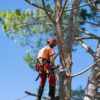January 2023 Report
The NZ forest industry return from summer holidays has been greeted with generally positive news out of China, but our local sawmills have started to come off the boil significantly with furrowed brows being the order of the day.
Although China effectively goes “off line” from 23 January for 2 weeks during New Year celebrations and holidays, there is no doubt the air of positivity signals a strong mood swing off the back of relaxed COVID restrictions.
In China, domestic sales prices have start to move upward with seemingly little more than an air of expectation driving this. Recent announcements by senior China leaders suggesting they expect significant Govt investment and a return to stronger economic growth should be very much good news to a Kiwi forest owners ears.
For any new readers and by way of explanation, when we talk export log price, we are referring to A grade logs. These are the highest volume by grade in the market and therefore the price determinant. When A grade prices are agreed, all other log prices settle at common margins above or below A grade.
A grade logs are those with a minimum small end diameter of 30cm and 3.8m long plus 100mm trim. Maximum branch size can vary to customer preference, but for most is a maximum 12cm.
A grade compares with the closest grade commonly sold to NZ sawmills producing house framing. Those are typically S30 grade being 4.8m+ long with a minimum small end of 30cm and a maximum branch diameter of 7cm.
Domestic log prices are typically higher quality and price and much more price stable than export. This, as I have always maintained, emphasises our domestic sawmills are our backbone and must remain the log supply focus.
Even in regions in NZ where there is a good number of sawmills, we very much need export sales to move the heavier branched logs. There is also export log grades right down to 12cm diameter and branches up to 20cm at mostly pretty good prices. Thus, a vibrant market is enhanced where there is good demand in both export and domestic segments.
And when we talk about CFR price settlements, that means the cost of log including freight landed in China in US$ per export cubic metre called JAS. JAS is a “Japanese Agricultural Standard” cubic metre of measure, is generally 2 dimensional and calculated by small end diameter times length.
The current CFR price is in a range US$127 – $130 per JAS A grade basis depending on who you talk to. This is historically quite low. In January 2022 A grade was $139 and June 2022 US$150. In the last three years I have seen it as low as US$118 and as high as US$170. Such volatility is one of the challenges facing forest owners trying to make a decision about when to harvest their trees.
In 2022, shipping had a significant impact on the NZ log grade, as it did in many NZ commodities. Shipping rates reached US$70 per JAS, more than double the normal levels. This completely eroded the NZ wharf gate price causing many harvest operations to stop. I am delighted to say shipping companies are having a really tough time of it now, poor souls, (not) with rates coming down quickly.
Like log prices, supply and demand impacts shipping rates. In a typical month NZ forestry Inc requires 45 – 50 vessels to move their logs to China. Right now, there are plenty of vessels opening on NZ, charterers have choice and shipping companies have been firmly told to get their pencil sharpeners out.
The longer than normal summer holiday enforced by some sawmills throughout NZ emphasises a significant over supply of lumber. I highlighted way back in September ’22 there appeared to be a scatter gun approach to orders when volumes were constrained. Those over-zealous chickens have now come home to roost.
Building activity is still strong but many sawmills cranked up production in 2022 so there is a supply correction going on which some have suggested is a three to four month problem. Again, these sawmills and sales are critical to all forest owners so let’s hope this supply/demand arm wrestle match is short live.
As always People, please remember the thoroughly important message, “it remains, as always, fundamentally important, the only way forward for climate, country and the planet, is to get out there and plant more trees”!
Allan Laurie.
Laurie Forestry.













